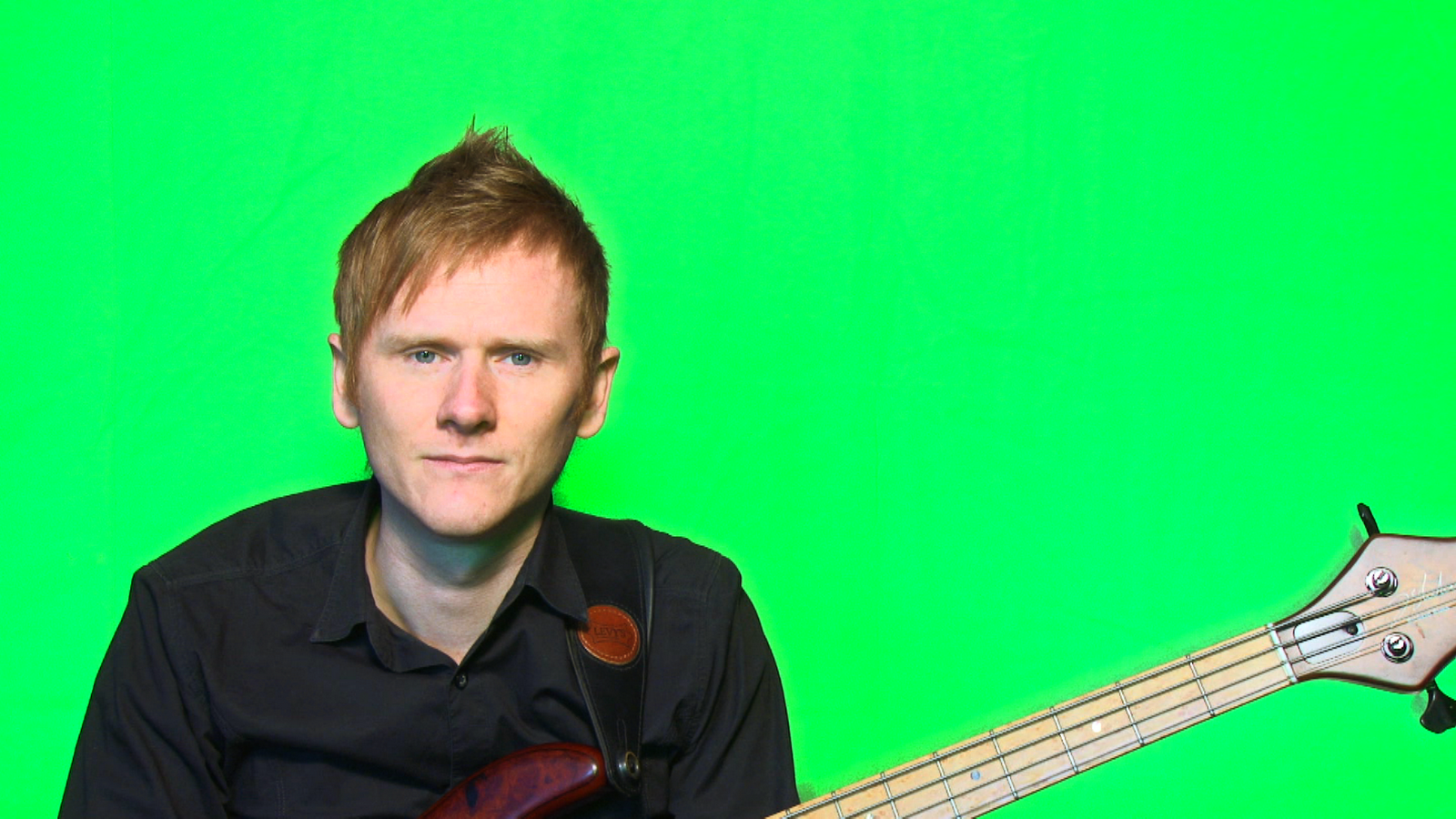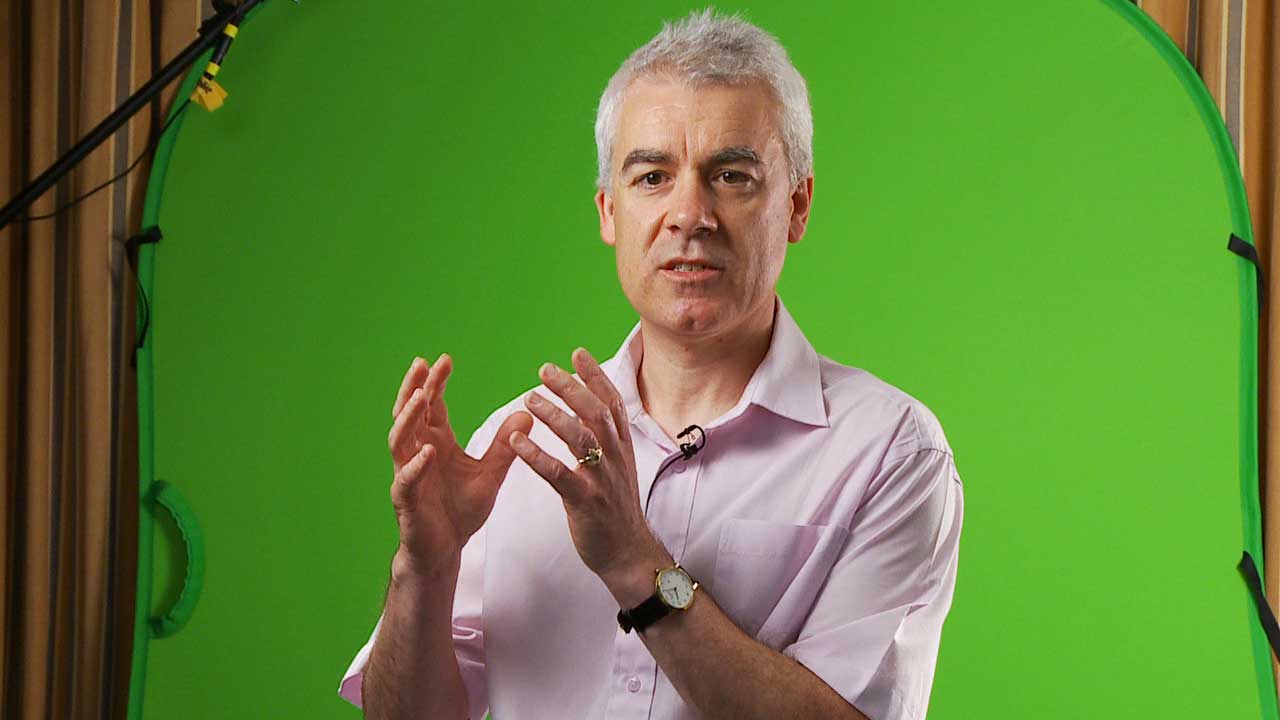Chroma key
The color- based image Exemption (English chroma keying ) is a technique in film and television technology, which makes it possible subsequently to set objects or people who have a background that either a real movie recording (eg landscape ) or a computer graphics ( for example, the background at news broadcasts may contain ).
The frequent use of blue background is commonly referred to as blue screen technique (English bluescreen = " blue screen " ) or blue-box art. The also frequent use of 'green key color is accordingly called green-screen technology or green box.
Description
For this purpose, a person is first taken before a well-lit background area of the selected key color. Blue as background was chosen because it is the human body least likely occurring color and are best apart from skin tones. To indemnify the person a cutout mask is used that defines the visible and invisible image area. The process of placing free is therefore also known as matting or keying. Finally, the new background movie and the cropped foreground film are combined. This process is known in technical jargon as punching.
An early form of the blue screen technique was used for the first time in 1933 in the movie King Kong. The first movie, much has been done with blue screen in which was Ben Hur (1959). In Germany, the blue-screen technique was introduced in the 1960s; several scenes of the TV series Space Patrol were shot with it.
In television, similar methods ( blue box ) can be used. These were in Germany mainly through the dialogues between the Showmaster Wim Thoelke and created by Loriot cartoon character wum in the ZDF shows three times and nine Grand Prix known. Furthermore, it was applied in the lavish production to series People from Cathedral Square.
In analog playout local television station, the process was turned around for the display of station logos ( Corner logo). The black background of a station logo was replaced by the actual content of the film. This technique was replaced by the cross Convert transparent logos (alpha channel) using character generators whose fill and key signals are punched from the transmitter mixer in the transmitter output, or with the appropriate logo inserter.
Green Screen
In recent years, alternatively, was the use of green as a key color ( " green screen "). The question of whether green or blue can obtain better results, there are different views, so that worked in the film industry with both colors. For Green is noted as positive that green backdrop color easily gives a bright, vivid color impression, which then differs from other color shades in the film. In addition, it is stated that in modern video cameras, each pixel is made up of one red and blue and two green pixels composed (→ Bayer sensor). Thus, a green screen shot especially for video would be better suited, since twice as much green information is available as blue.
In the GDR was also previously worked with green instead of blue because the blue SECAM only every other line is transmitted and is therefore not suitable.
In addition to the technical advantages of the green screen allows people in photo blue clothing in any variation.
Virtual Studio
A virtual studio is a studio ( television or movie studio), which is built up with help of blue screen and green screen technology. It is often used in news studios, such as ARD, ZDF and RTL, where 3D graphics are used to help viewers understanding.
Chroma Key
In the modern digital processing of film and television, any color can be used to define the template, generalized one speaks then of chroma-key method (English chroma key = " colored tactile keys ").










